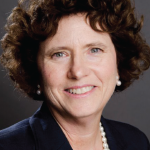- Effective features and models;
- Needs assessments incorporating patient perspective;
- Addressing the needs of diverse communities; and
- Defining relevant outcome measures.
This study group continues to develop the foundation of an ongoing forum for healthcare professionals with interest or experience in developing an integrative, multidisciplinary approach to patient education and support.
ACR: ILAR: Innovative Patient Education to Overcome Patient Barriers
2:30–3:30 p.m.
Asia-Pacific comprises Asia and Oceania. This is the largest region of the world, comprising around 40% of the total land area and 70% of the current world population. Its economy is diverse with per capita GDP ranging from $40 (U.S.) in Tuvalu to 59,324 in Qatar. Thirty out of 73 (Asia 55, Oceania 18) countries have rheumatology organizations affiliated with Asia-Pacific League of Associations for Rheumatology (APLAR). It may be assumed that rheumatology has not grown as a specialty in remaining 42 countries. Owing to variable economic growth, the population to doctor ratio and population to specialist ratio vary widely among these countries. Not unexpectedly, the quality and extent of coverage of patient education also vary considerably.
A survey questionnaire was distributed to the leading rheumatologists in 30 national rheumatology organizations (NROs). Members of 19 provided adequate information: nine, seven and three belonged to advanced, medium and developing economies, respectively. It is conceivable that data from the three developing countries reflected the scenario of most of the remaining 53 countries—the majority of people in Asia-Oceania. The patient education is well organized, using diverse providers and diverse didactic methods. Content coverage is optimum. In developing communities, education is inadequate, provided by a few categories of providers, mostly doctors, utilizing mostly a few minutes during the clinical encounter and occasionally with large groups. Unsatisfactory coverage has been explained by the heavy workload in these societies.
In this session, Syed Atiqul Haq, MD, FCPS, FRCP, will provide details of these data, ancillary information and how Asia-Oceania may improve its education for rheumatic patients.
ARHP: Pediatric Transition Approaches on Both Sides of the Pond
2:30–4 p.m.
Adolescence and young adulthood are developmental stages quite different from childhood and adulthood. Puberty usually completes by mid-adolescence, but recent advances in neurobiology have shown brain development continues well into the mid-20s. This is especially important in the frontal and prefrontal cortex, responsible for adult executive functions, including abstract thinking and long-term planning. Young people need to take risks to complete this brain development, but the kinds of behaviors they engage in can make healthcare challenging.
Rheumatology teams need to be able to communicate with young people to assess their developmental stage and pitch their care accordingly. They need to work together across the pediatric and adult divide to ensure smooth passage so young people don’t get lost in transition.
This session will outline the current knowledge about adolescent and young adult (AYA) brain development and what is special about AYA rheumatology. It will also cover best practices in transition and suggest practical approaches to providing the best care for AYAs, whether you work in pediatric or adult rheumatology.
ACR: Adult Autoinflammatory Diseases, Talk Referencing–Idiopathic Recurrent Pericarditis
2:30–4 p.m.
Nowadays, rheumatologists are at the nexus of immunologic diseases and are frequently asked to provide input and recommendations across specialties. We act more as interventional immunologists than as bona fide rheumatologists in the traditional concept. We take care of patients afflicted with immune-mediated gastrointestinal, ophthalmologic and dermatologic diseases. Cardiologists are increasingly recognizing the need for collaboration on the 10% of idiopathic recurrent pericarditis patients recalcitrant to standard therapy, which, at times, includes immunomodulatory agents. What are the red flags requiring aggressive diagnostic workup? Is cardiac MR useful? What is the status quo on the pathogenesis of pericarditis? What is driving treatment with biologic agents? Tune in for a clinical overview in the rapidly evolving field bridging cardiology with rheumatology.
ARHP: The Aging Foot in Rheumatology
4:30–6 p.m.
This session will provide a platform for discussion about the aging foot in rheumatology, the impact of foot pain on mobility, balance and falls, and the effectiveness of interventions to address these complaints.
Three experts will discuss recent clinical findings and ongoing research. Hylton B. Menz, PhD, from La Trobe University, Australia, will explore the management of chronic foot pain in older people to improve mobility and prevent falls. Yvonne M. Golightly, PT, MS, PhD, from the University of North Carolina at Chapel Hill will talk about the role of the foot and ankle in falls in people with arthritis. Keith Rome, PhD, from AUT University, New Zealand, will describe the latest advances in the understanding of foot function, pain disability and impairment in older adults with both degenerative and inflammatory arthritis.
The session will inform clinicians of current trends and their significant impact on clinical practice, and provide key stakeholders with information about clinical, non-surgical interventions for older adults with foot pain and arthritis.
MORE INFO
Developing healthy and robust social support networks is a vital part of maintaining mental health for healthcare providers and their patients. The ACR/ARHP Annual Meeting provides countless supportive opportunities, ranging from sessions to directed study and networking opportunities.
For the latest program information and speaker bios, visit https://acr.confex.com/acr/2018/meetingapp.cgi/Home/0. You can search by date, session, track, speaker and more.


